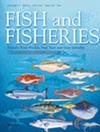量化印度洋渔业的营养和社会生态维度
IF 6.1
1区 农林科学
Q1 FISHERIES
引用次数: 0
摘要
来自海洋渔业的海产品,如鳍鱼和无脊椎动物,是全球数十亿人的重要营养来源。海产品的微量营养素浓度、经济价值以及对开发利用和气候变化的脆弱性各不相同。然而,渔业管理很少考虑渔业捕捞的营养质量及其与经济、养护和气候脆弱性方面的关系。在此,我们定量分析了印度洋渔业开发的分类群的微量元素供应和平均微量元素浓度。我们还评估了特定分类群的微量营养素浓度、船外价格、捕捞脆弱性和气候脆弱性之间的关系。我们发现,小型远洋鳍鱼尽管对总渔获量贡献不大,但其微量营养素含量特别丰富,适应力强,价格低廉,这凸显了它们在粮食和营养安全方面的作用。相比之下,金枪鱼和头足类等分类群的营养密度更低,更脆弱,并且具有更高的血管外价格。结果还显示,环印度洋国家(IOR)和远洋捕鱼国家(DWF)之间的捕获微量营养素浓度存在差异。IOR国家的渔获量主要由富含钙、ω - 3脂肪酸和铁但具有较高气候脆弱性的类群组成。远洋渔业的渔获量仅占印度洋微量营养素供应总量的2%,其中硒含量相对较高,更容易受到捕捞的影响,而且船外价格较高。我们的研究结果突出了印度洋渔业在营养、经济、保护和气候适应能力方面的权衡和协同作用,为旨在平衡多个优先事项的营养敏感型渔业管理战略提供了关键见解。本文章由计算机程序翻译,如有差异,请以英文原文为准。
Quantifying the Nutritional and Socio‐Ecological Dimensions of Indian Ocean Fisheries
Seafood from marine fisheries, such as finfishes and invertebrates, is an important source of nutrients for billions of people globally. Seafood species vary in their micronutrient concentration, their economic value, and their vulnerability to exploitation and climate change. However, fisheries management has rarely considered the nutritional quality of fisheries catches and their relation to economic, conservation and climate vulnerability dimensions. Here, we quantified and analysed the micronutrient supply and average micronutrient concentration of taxa exploited by fisheries in the Indian Ocean. We also assessed associations among taxon‐specific micronutrient concentrations, ex‐vessel prices, fishing vulnerability and climate vulnerability. We found that small pelagic finfishes, despite contributing little to the overall catch weight, were particularly rich in micronutrients, were resilient and low priced, highlighting their utility in food and nutritional security. In contrast, taxa such as tunas and cephalopods were less nutrient‐dense, more vulnerable and had higher ex‐vessel prices. Results also showed differences in catch micronutrient concentrations between countries within the Indian Ocean Rim (IOR) and Distant Water Fishing (DWF) countries. IOR country catches were dominated by taxa richer in calcium, omega‐3 fatty acids and iron but with higher climate vulnerability. DWF catches, which accounted for only 2% of the Indian Ocean's total micronutrient supplies, were relatively richer in selenium, more vulnerable to fishing and had higher ex‐vessel prices. Our results highlight the trade‐offs and synergies among nutritional, economic, conservation and climate resilience dimensions of Indian Ocean fisheries, providing key insights for nutrition‐sensitive fisheries management strategies aimed at balancing multiple priorities.
求助全文
通过发布文献求助,成功后即可免费获取论文全文。
去求助
来源期刊

Fish and Fisheries
农林科学-渔业
CiteScore
12.80
自引率
6.00%
发文量
83
期刊介绍:
Fish and Fisheries adopts a broad, interdisciplinary approach to the subject of fish biology and fisheries. It draws contributions in the form of major synoptic papers and syntheses or meta-analyses that lay out new approaches, re-examine existing findings, methods or theory, and discuss papers and commentaries from diverse areas. Focal areas include fish palaeontology, molecular biology and ecology, genetics, biochemistry, physiology, ecology, behaviour, evolutionary studies, conservation, assessment, population dynamics, mathematical modelling, ecosystem analysis and the social, economic and policy aspects of fisheries where they are grounded in a scientific approach. A paper in Fish and Fisheries must draw upon all key elements of the existing literature on a topic, normally have a broad geographic and/or taxonomic scope, and provide general points which make it compelling to a wide range of readers whatever their geographical location. So, in short, we aim to publish articles that make syntheses of old or synoptic, long-term or spatially widespread data, introduce or consolidate fresh concepts or theory, or, in the Ghoti section, briefly justify preliminary, new synoptic ideas. Please note that authors of submissions not meeting this mandate will be directed to the appropriate primary literature.
 求助内容:
求助内容: 应助结果提醒方式:
应助结果提醒方式:


